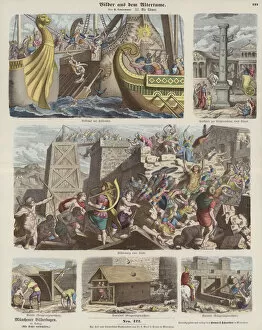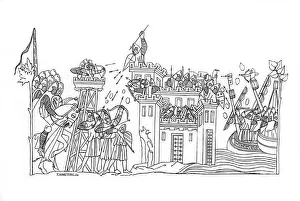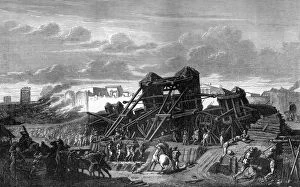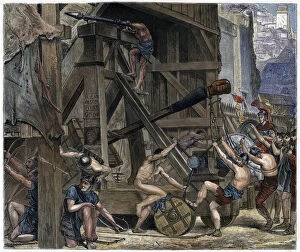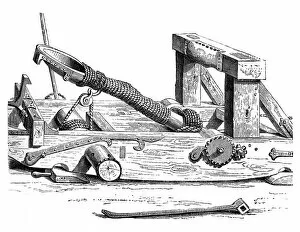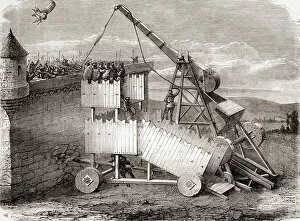Siege Engine Collection
"The Mighty Siege Engines: A Glimpse into Ancient Warfare" Step back in time and witness the power of siege engines
All Professionally Made to Order for Quick Shipping
"The Mighty Siege Engines: A Glimpse into Ancient Warfare" Step back in time and witness the power of siege engines, formidable machines that shaped the outcome of countless battles throughout history. From ancient Assyria to the mighty Roman Empire, these colossal contraptions were instrumental in breaching fortified walls and securing victory. In a vividly colored engraving depicting the Romans, we are transported to an era where warfare was both brutal and strategic. The scene captures the intensity of a siege, as soldiers maneuver massive wooden structures towards their target. Created by Henry Shaw in 1843, this artwork serves as a window into a bygone era. The influence of ancient Assyria is undeniable when it comes to siege warfare. Another colored engraving showcases an Assyrian army besieging a city with meticulous precision. These skilled warriors utilized advanced tactics and innovative machinery to overcome their adversaries' defenses. History takes us further back to Marseille in 49 BC during Julius Caesar's campaign against Gaul. An intriguing engraving illustrates the Roman forces laying siege on Massilia (Marseille), showcasing their relentless determination for conquest. Siege engines were not only instruments of war but also witnessed significant events unfold within their shadow. At the Siege of Toulouse in 1218, Simon de Montfort met his demise amidst fierce fighting. This historical moment is immortalized through an evocative engraving capturing the chaos and tragedy that often accompanied sieges. Amongst these engravings lie depictions of Roman catapults - fearsome weapons capable of launching devastating projectiles over great distances with deadly accuracy. These marvels of engineering played pivotal roles during sieges, wreaking havoc upon enemy fortifications from afar. Battering rams were another indispensable tool employed by ancient armies during sieges. The Encyclopedie des Sciences et Metiers provides us with illustrations showcasing various types used by Romans – powerful symbols representing brute force combined with ingenuity.

